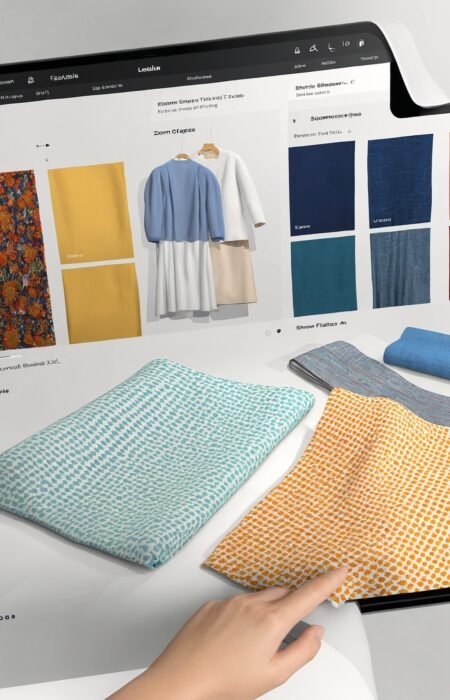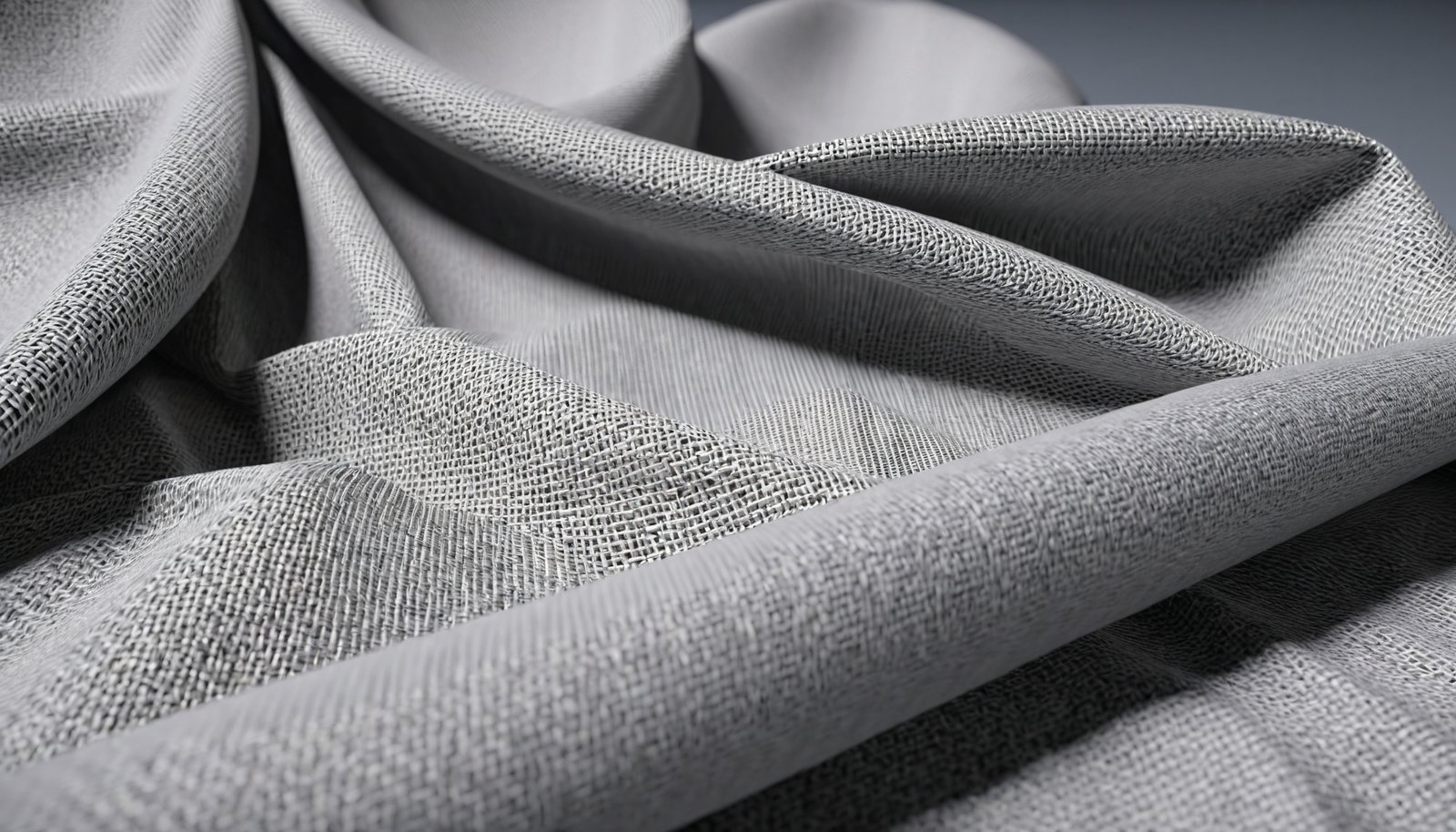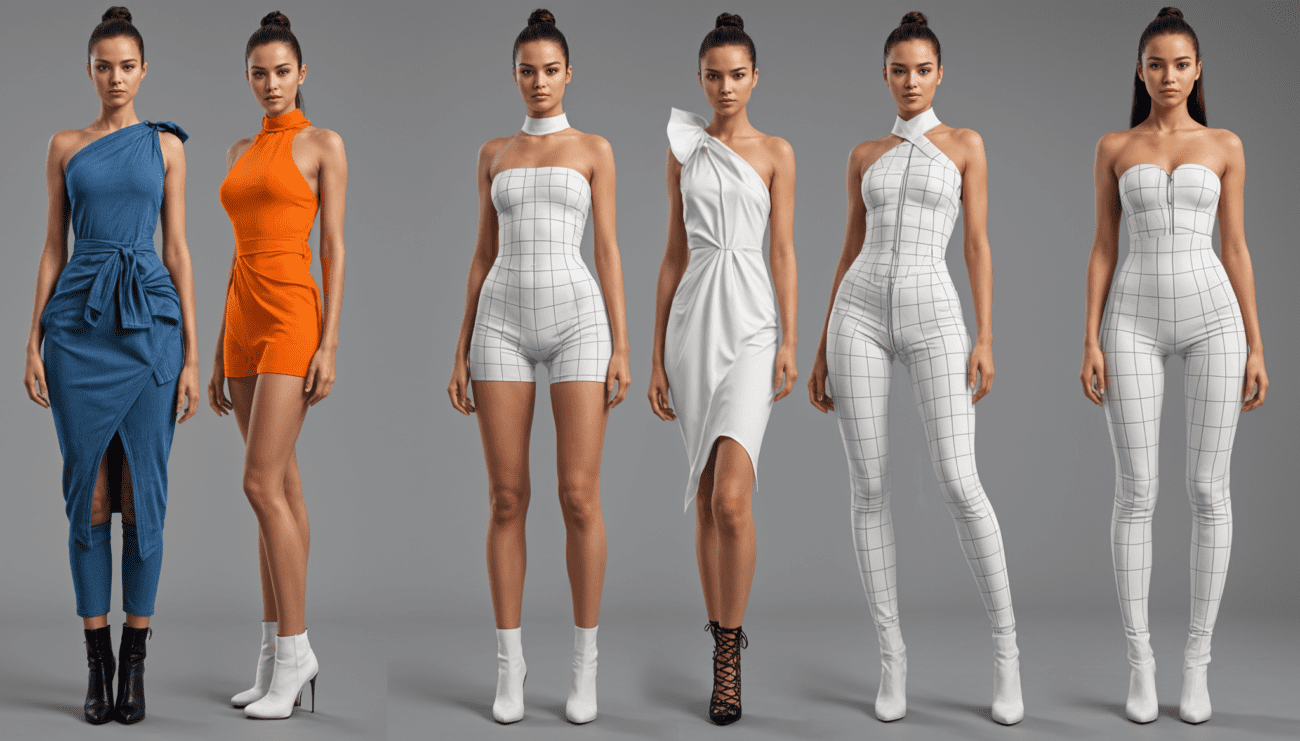Table of Contents
ToggleIntroduction
In the rapidly evolving world of fashion, digital showrooms are becoming an essential tool for designers and buyers. These virtual spaces offer an innovative way to showcase textile collections, allowing for detailed and interactive visualization of fabrics and garments. For fashion designers and buyers who focus on bulk orders and fabrication, mastering the art of effective textile visualization in a digital showroom is crucial for enhancing decision-making, streamlining the design process, and captivating a global audience.
The Importance of Textile Visualization in Digital Showrooms
Textile visualization in a digital showroom goes beyond simply displaying fabric swatches. It involves creating realistic, interactive, and immersive experiences that allow users to understand the texture, drape, color, and pattern of fabrics as if they were examining them in person. Effective textile visualization can:
- Enhance Design Accuracy: Accurate digital representations of textiles help designers make informed decisions, reducing the need for physical samples.
- Streamline Buyer Decisions: Buyers can assess fabrics in detail, facilitating quicker and more confident purchasing decisions.
- Expand Global Reach: Digital showrooms eliminate geographical barriers, allowing designers and buyers to connect and collaborate globally.
- Increase Engagement: Interactive and visually appealing digital displays capture the attention of viewers, leading to higher engagement and interest.
Key Elements of Effective Textile Visualization
To create an impactful digital showroom, several key elements must be considered:
1. High-Quality 3D Models
Creating high-quality 3D models of textiles is the foundation of effective visualization. These models should accurately represent the texture, weight, and drape of the fabric.
- Software Tools: Use advanced 3D modeling software like CLO 3D, Marvelous Designer, or Blender to create detailed fabric simulations.
- Attention to Detail: Pay close attention to fabric properties such as weave, knit, and surface texture to ensure realistic representations.
- Drape and Movement: Simulate how the fabric drapes and moves, showcasing its behavior in different conditions.
2. Realistic Textures and Patterns
Textures and patterns are crucial for conveying the look and feel of a fabric. High-resolution textures and accurate pattern placement are essential for realism.
- Texture Mapping: Use high-resolution scans or digital images of actual fabrics for texture mapping in your 3D models.
- Pattern Accuracy: Ensure patterns are scaled correctly and aligned properly on the fabric model.
3. Accurate Color Representation
Color accuracy is vital for textile visualization, as it influences design choices and purchasing decisions.
- Color Calibration: Calibrate your monitors and use color management tools to ensure accurate color representation.
- Lighting Conditions: Simulate various lighting conditions to show how the fabric color appears under different environments.
4. Interactive Features
Interactive features enhance user engagement and provide a deeper understanding of the textiles.
- Zoom and Rotate: Allow users to zoom in on details and rotate the fabric model to view it from different angles.
- Fabric Swatches: Provide interactive fabric swatches that users can click on to view additional details and information.
- Customization Options: Include options for users to customize fabrics, such as changing colors, patterns, or textures.
Setting Up a Digital Showroom
Creating a digital showroom involves several steps, from selecting the right tools to designing an engaging user interface. Here’s a step-by-step guide:
1. Choosing the Right Platform
Select a platform that supports high-quality 3D visualization and interactive features. Popular platforms include:
- Sketchfab: Offers powerful 3D visualization tools and is easy to integrate with other software.
- Unity: A versatile platform for creating interactive 3D environments.
- Unreal Engine: Known for its high-quality graphics and realistic simulations.
2. Designing the User Interface
The user interface (UI) of your digital showroom should be intuitive and visually appealing.
- Navigation: Ensure easy navigation with clear menus and interactive elements.
- Layout: Organize the showroom layout to highlight key collections and fabrics.
- Aesthetic: Maintain a consistent aesthetic that reflects your brand’s identity.
3. Creating Digital Garments
In addition to fabric swatches, create digital garments that showcase how the textiles can be used in finished products.
- 3D Garment Models: Use 3D modeling software to design garments and simulate how the fabrics will look and move.
- Virtual Try-Ons: Include virtual try-on features where users can see how garments fit and move on virtual avatars.
4. Implementing Interactive Features
Interactive features are crucial for engaging users and providing a comprehensive textile visualization experience.
- Clickable Hotspots: Add hotspots to garments and fabrics that users can click on for more information.
- Customizable Options: Allow users to customize fabrics and garments, such as changing colors, patterns, and textures.
- 3D Viewers: Integrate 3D viewers that enable users to interact with the fabric models in real-time.
Best Practices for Textile Visualization
To ensure the best results, follow these best practices for effective textile visualization in a digital showroom:
1. Use High-Resolution Textures
High-resolution textures provide the detail needed for realistic fabric representation. Avoid low-resolution images that can appear pixelated or blurry.
2. Optimize for Performance
Ensure that your digital showroom is optimized for performance, with fast loading times and smooth interactions. Compress files and use efficient rendering techniques to achieve this.
3. Provide Detailed Descriptions
Accompany visual representations with detailed descriptions of the fabric’s properties, including material composition, weight, and care instructions.
4. Update Regularly
Regularly update your digital showroom with new collections and fabrics to keep it fresh and engaging. Highlight seasonal trends and new arrivals.
Case Studies and Success Stories
To illustrate the impact of effective textile visualization, let’s look at some case studies and success stories from the fashion industry.
Case Study 1: [Brand Name]’s Digital Fabric Library
[Brand Name] created a digital fabric library that allowed designers and buyers to explore a wide range of textiles in a virtual environment. The library featured high-resolution textures, interactive swatches, and detailed descriptions, resulting in increased engagement and faster decision-making.
Case Study 2: [Brand Name]’s Virtual Showroom
[Brand Name] launched a virtual showroom that showcased their latest collection of sustainable fabrics. The showroom included interactive features such as virtual try-ons and customizable options, leading to a significant increase in global sales and positive customer feedback.
Challenges and Future Prospects
While digital showrooms offer numerous benefits, they also come with challenges that need to be addressed for widespread adoption.
Technical Challenges
- High Initial Costs: The initial investment in digital tools and technology can be high, particularly for small and medium-sized enterprises.
- Technical Expertise: There is a need for skilled professionals who can design and develop effective textile visualizations and interactive features.
- Compatibility and Standards: Ensuring compatibility and interoperability between different platforms and devices is crucial for a seamless experience.
Adoption and Acceptance
- Consumer Education: Educating consumers about the benefits and possibilities of digital showrooms is essential for widespread acceptance.
- Cultural Differences: Different regions and cultures may have varying levels of acceptance and interest in digital textile visualization.
- Regulatory Frameworks: Developing regulatory frameworks to govern digital transactions and virtual showrooms is necessary to protect consumers and businesses.
The Future of Digital Showrooms
The future of digital showrooms looks promising, with continuous advancements in technology and increasing adoption across the fashion industry. Here are some trends to watch:
Integration of AI and Machine Learning
AI and machine learning will further enhance textile visualization by offering personalized experiences, optimizing design processes, and predicting fashion trends.
Expansion of Virtual and Augmented Reality
As VR and AR technologies advance, digital showrooms will become even more immersive and interactive, providing a more realistic experience for users.
Sustainable Innovations
Digital showrooms will continue to drive sustainability in the fashion industry, with innovations aimed at reducing waste and promoting ethical practices.
Conclusion
Effective textile visualization in a digital showroom is a game-changer for fashion designers and buyers. By leveraging high-quality 3D models, realistic textures, accurate colors, and interactive features, fashion professionals can create engaging and informative virtual spaces that enhance decision-making and streamline the design and purchasing processes. Embracing digital showrooms not only expands global reach but also contributes to more sustainable and efficient fashion practices.







